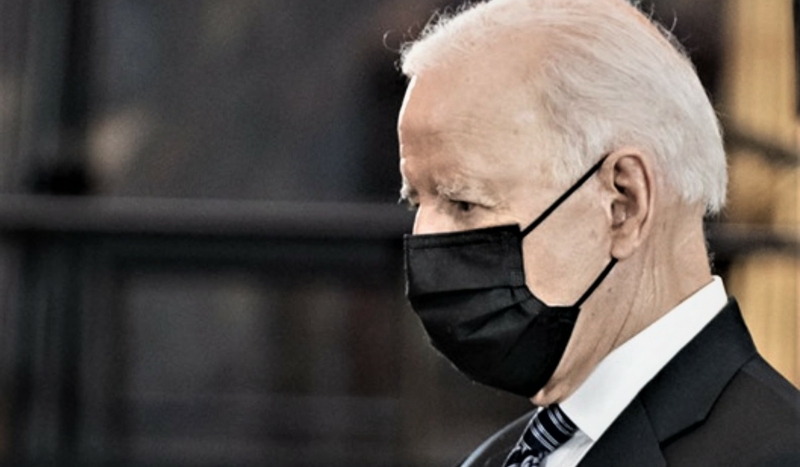
CV NEWS FEED // Two prominent Democrats wrote an essay in the New York Times calling on President Biden and the Democratic Party to reverse course in order to avoid massive election losses in 2022 and 2024.
“Swing voters in two blue-leaning states just sent a resounding wake-up call to the Biden administration,” wrote former Clinton adviser Mark Penn and former New York City Council President Andrew Stein. “If Democrats remain on their current course and keep coddling and catering to progressives, they could lose as many as 50 seats and control of the House in the 2022 midterm elections.”
They cited last Friday’s passage of a popularly-supported infrastructure bill as only a “first step” in the right direction for “President Biden and the Democratic Party, “but only a broader course correction to the center will give Democrats a fighting chance in 2022 and a shot at holding on to the presidency in 2024.”
They went on to point out that President Biden won the 2020 Democratic presidential nomination by presenting himself as “the moderate alternative to Bernie Sanders,” then won the presidency thanks to the perception that he was an “antidote to the division engendered by Donald J. Trump.”
Since then, however, the Biden presidency has come to be characterized by both the far-left policies of Sanders and the divisiveness which Biden associated with Trump, Penn and Stein suggested.
Polling “on key issues show that voters have been turning against the Biden administration, and rejecting its embrace of parts of the Bernie Sanders/Alexandria Ocasio-Cortez playbook,” the authors wrote:
According to our October Harvard CAPS/Harris Poll, only 35 percent of registered voters approve of the administration’s immigration policies (which a majority view as an open-borders approach); 64 percent oppose eliminating cash bail (a progressive proposal the administration has backed); and most reject even popular expansions of entitlements if they are bundled in a $1.5 to $2 trillion bill based on higher taxes and deficits (the pending Build Back Better initiative). Nearly nine in 10 voters express concern about inflation. And 61 percent of voters blame the Biden administration for the increase in gasoline prices, with most also preferring to maintain energy independence over reducing carbon emissions right now.
Regarding the Build Back Better Act, Penn and Stein noted that left-wing Democrats have ignored the main concern of their would-be base — which is not the bill’s social content so much as its high price tag. Most moderate Democrats would support increased social programming, the authors argued, but only if it met “the tests of fiscal responsibility — and most voters don’t believe Build Back Better does so….”
…Putting restraints on these entitlements so that they don’t lead to government that is too big, and to ballooning deficits, is at the core of the moderate pushback on the bill that has caused a schism in the party.
While President Biden, Sen. Bernie Sanders, D-VT, Rep. Alexandra Ocasio-Cortez, D-NY, and other leading progressive Democrats have tried to portray moderate party members as outsiders and saboteurs of a popular Biden agenda, Penn and Stein argued the opposite.
“Senator Joe Manchin and Senator Kyrsten Sinema are not outliers in the Democratic Party; they are, in fact, the very heart of the Democratic Party, given that 53 percent of Democrats classify themselves as moderates or conservative,” the authors wrote:
While Democrats support the Build Back Better initiative, 60 percent of Democrats (and 65 percent of the country) support the efforts of these moderates to rein it in. It’s Mr. Sanders from Vermont and Ms. Ocasio-Cortez from New York who represent areas ideologically far from the mainstream of America.
The essay analysed a number of other issues and recent events, all demonstrating a common theme: that American voters are not as far-Left as the Biden administration has been during most of its first year.
In particular, the authors pointed to Democrat Terry McAuliffe’s failed campaign for the governorship of Virginia. In 2013, he ran successfully as a moderate. “This time, he deliberately nationalized his campaign by bringing in President Biden, Vice President Kamala Harris and former President Barack Obama, and he closed out the race with the head of the teachers’ union, an icon on the left,” and embraced “a range of left-of-center Democratic politicians rather than push off the left and try to win swing voters.”
The authors decried the Democratic campaign method of “yelling ‘Trump, Trump, Trump’ when Mr. Trump is not on the ballot or in office,” and urged Democrats to remember that “only about one quarter of the country classifies itself as liberal, and while that is about half of the Democratic Party, the rest of the electorate nationally is moderate or conservative.”
…We live in a 40-40-20 country in which 40 percent are hard-wired to either party and 20 percent are swing voters, primarily located in the suburbs. After losing a game-changing slice of Midwestern working-class voters, who had voted for Mr. Obama, over trade, immigration and cultural policies, Democrats were steadily gaining in the suburbs, expanding their leads in places like New Jersey and Virginia. Without voters in these places, the party will be left with only too small of a base of urban voters and coastal elites.
At the heart of the essay, Penn and Stein advised that President Biden do as President Bill Clinton once did:
After the 1994 congressional elections, Bill Clinton reoriented his administration to the center and saved his presidency. Mr. Biden should follow his lead, listen to centrists, push back on the left and reorient his policies to address the mounting economic issues people are facing.
“Unless it recenters itself,” the authors concluded, “the risk is that the Democratic Party, like the Labour Party in Britain, will follow its greatest success with an extended period in the desert.”
Subscribers to the New York Times can read Mark Penn and Andrew Stein’s full essay here.

